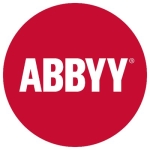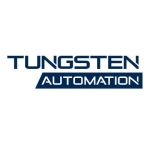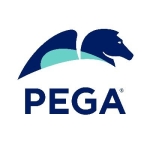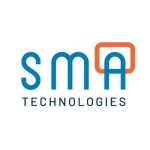What is our primary use case?
UiPath Platform is evolving into an enterprise-grade platform with different services, so there's no one specific use case. We use it for multiple different use cases, however, with one of our main clients right now, it is more about UI automation, including legacy systems that don't offer any API integration, so that we can consume them as part of the end-to-end workflow.
What is most valuable?
My favorite features of UiPath Platform include Document Understanding, which is pretty straightforward. We have a lot of scenarios in which extracting data from documents is relevant for the end-to-end automation, and UiPath Platform is doing a really good job with that kind of use case.
I can't disclose the specific document types, however, we have a case management system, and each case's case worker uploads a bunch of documents. We extract data from at least 15 different documents and then update the same case management system with the metadata we extract from the documents. Additionally, we automate filling forms in third-party applications, using data extracted from both the case management and the documents.
The biggest benefit I've seen from UiPath Academy is that it serves as the starting point when we onboard junior developers. We ask them to complete specific courses as part of their training, even if they have some experience with UiPath Platform. It is also valuable for new products, as we upskill the team with the latest courses when UiPath Platform releases new products. However, there is often a delay since UiPath Platform typically releases features before the academy courses, and it would be ideal for them to provide better training earlier. It is a continuous learning experience, with almost all the basics completed by junior talent as part of the training program while senior team members continuously upskill with the latest courses.
What needs improvement?
UiPath Platform could be improved, especially in terms of documentation. For example, we were early adopters of IXP, and the initial documentation lacked enough information for us to understand the whole product and best practices. Although UiPath Platform started releasing new versions of documentation and courses, there remains a need for better engineering basics and courses on LLMs since they are crucial for understanding the product behind the scenes. The final products for both documentation and the Academy are good, but the release timing can be challenging for early adopters who struggle to understand the products at the beginning.
UiPath Platform scales really from a technical standpoint, however, from a licensing and pricing perspective, scaling becomes challenging. In our case, we have an ELA, which sets restrictions on how many robots we can scale and how many AI units we can consume, making it a less-than-ideal experience regarding pricing when trying to scale.
For how long have I used the solution?
I've been using the solution for around seven years.
What do I think about the stability of the solution?
I would assess the stability and reliability of UiPath Platform as generally really good, with only a few isolated and specific situations of downtime, crashes, or performance issues.
What do I think about the scalability of the solution?
Expanding usage involves finding more automation opportunities. Some automations we've developed have scaled significantly due to the volume that needs processing, and from a technical standpoint, it's essential to make the right technical decisions and design a scalable solution. On the business side, I'm not as familiar, however, negotiations aren't always straightforward, and the complex pricing model makes it an extremely significant pain point for scaling UiPath Platform.
How are customer service and support?
My evaluation of customer service and technical support from UiPath Platform would not have been good until they forced us to pay for additional fees to receive better customer service. After starting to pay, the service becomes acceptable, however, it's not the best.
I am actively engaged in the insider program for early previews, leaving many comments and trying to interact with the insider portal, and yet we often do not receive quick responses from UiPath Platform, taking one to two weeks for a reply.
Overall, after paying the additional fee, I can say it is acceptable. That said, before that, the service was really bad. The response time is what made it really bad.
I would rate my customer service and technical support experience as neutral, with a score of five on a scale of one to ten. After paying the extra fee, I would give customer service and technical support a score of seven, as it improves but remains in the middle.
How would you rate customer service and support?
Which solution did I use previously and why did I switch?
Prior to adopting UiPath Platform, I worked with other BPMS platforms such as Bizagi and Bonitasoft. For RPA, we developed our own tool. Using UiPath Platform wasn't my personal decision; it was more of a professional coincidence due to moving to a different company where UiPath Platform was offered to some clients. I got assigned to those clients, so it was ultimately an accident rather than a decision I made.
How was the initial setup?
My experience with the pricing and setup process of UiPath Platform is really bad. As a solution architect, my architectural decisions were initially driven by technical aspects; however, now licensing has become another driver for making decisions.
I cannot recommend utilizing the best of the product in UiPath Platform, as it would incur high costs for my clients. It's not a good experience at all. For example, I would use Maestro in different use cases, yet justifying ROI with the pricing is impossible, adding overhead costs to a solution I could implement without Maestro. The Agentic-related features also present execution challenges, contributing to a negative experience regarding the license model.
The deployment model for UiPath Platform is cloud-based. For Automation Cloud, we use UiPath cloud. Our robots, which are part of the solution that runs on-premises, operate on on-prem servers and are not in the cloud at all.
What about the implementation team?
My teams have used the vendor's UiPath Academy courses.
What was our ROI?
I am not deeply involved in tracking the ROI metrics to provide specific numbers. I can say that the automation program has been growing significantly. Recently, it is really hard to stay updated with agents, IXP, and Maestro because it's challenging to find business cases to justify using those tools. This is frustrating since, as a technician, I would to leverage the best of the product and provide the best experience and solution for my clients, however, justifying the high price on the latest features makes that difficult.
Which other solutions did I evaluate?
Before selecting UiPath Platform, the situation is tricky because we did not consider other options initially, but due to the challenges with pricing now, we are considering Power Automate. Microsoft is offering excellent deals, especially with document processing, and they have their own orchestration style. While it is a different experience, the cost is much more appealing, leading us to contemplate several Microsoft products because of pricing rather than technical superiority. Some might argue that UiPath Platform is a better product, but they may not realize that even if Power Automate and the overall Power Platform are not the best technical options, they deliver good enough solutions at better prices, which could potentially lead us to shift clients from UiPath Platform to Microsoft Power Platform for business reasons.
What other advice do I have?
I use the Agentic AI only for POCs, as we don't have any live implementation in production.
UiPath Platform community and forum are extremely helpful for debugging and sharing best practices. We were very active in the community a long time ago, providing answers and asking questions, but recently we haven't been as active. Perhaps this is because the team is more senior now and we might not need that much interaction, but initially, it was very helpful.
My advice for other organizations considering UiPath Platform is to get the right professional services to help make the right technical decisions from the start. Establishing a good framework and developing reusable libraries and composability while making the right technical decisions initially is crucial for success. So, having the right partner at the beginning is key for success.
I would rate UiPath Platform as a nine out of ten, as I've had a high level of satisfaction.
Which deployment model are you using for this solution?
Public Cloud
If public cloud, private cloud, or hybrid cloud, which cloud provider do you use?
Other
Disclosure: My company does not have a business relationship with this vendor other than being a customer.



















